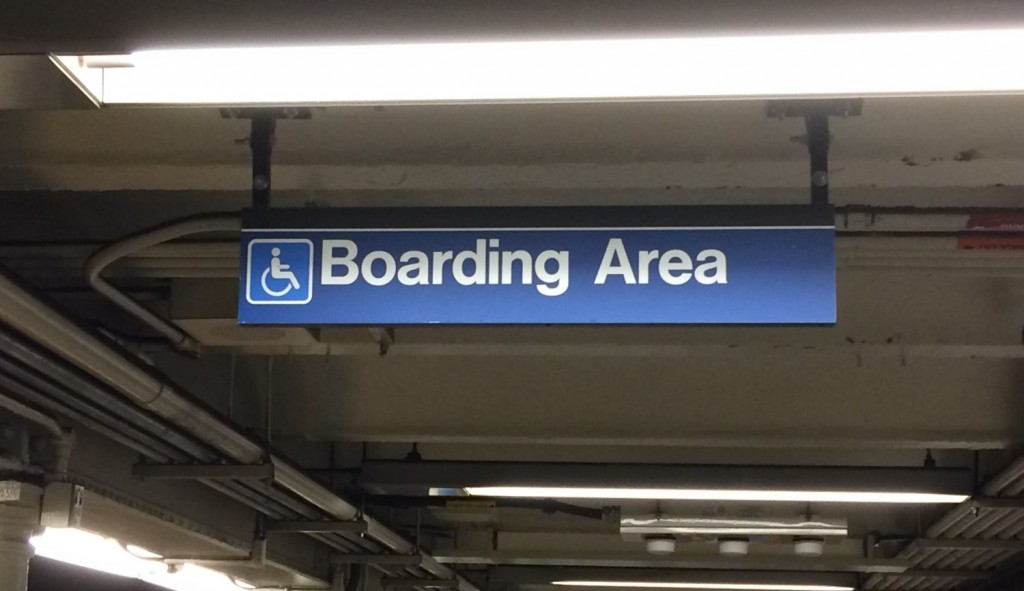Recently, accessibility has become a big topic of criticism for the MTA. At the past few board meetings, there have been major turnouts from the disability community who have expressed a growing demand for the MTA to do something about the abysmal nature of Access-A-Ride (AAR), the agency’s paratransit service. And this turnout is not without reason. According to the Citizens Budget Commission (CBC), paratransit trips have grown an average of 8.4 percent per year since 2002, almost five times more than subway ridership growth. The MTA has been listening: it plans to expand use of ride-hail services like Uber and Lyft, overhaul its scheduling system, upgrade their GPS tracking system, and develop a unified app allowing riders to book, confirm, and track their trips. We will all keep watch to see if the MTA follows through and improves accessibility and Access-A-Ride’s performance to accommodate the increasing ridership.
Improving the Access-A-Ride program should only be mode of attack. The MTA should additionally be addressing the AAR issue by moving some people away from the service entirely. The CBC’s report notes that AAR ridership increases may be due to the lack of options provided by subway services. This means that improving elevator access at subway stations throughout the city could help decrease the reliability many have on paratransit trips.
Other US transit systems have a much higher share of ADA accessible stations.
Only 23% of MTA stations have elevator access. Compare that with Boston and Chicago’s systems, which have much higher shares of accessible stations, 71% and 69% respectively. To give the MTA credit, in terms of absolute numbers, there are more stations with disability access in New York City than in either Boston or Chicago, but NYC Transit and the MTA can do much better. Elected and agency leadership in Boston and Chicago have been much more proactive about addressing accessibility issues in their systems, something that the MTA can learn from.
After the introduction of the American with Disabilities Act (ADA) in 1990, the MTA identified 100 key stations that would be made ADA compliant by 2020. New York currently has 110 ADA compliant stations (or 92 station complexes as noted on the MTA’s website), 89 of which are on the key stations list. As it stands, the MTA is on track to making the remaining key stations accessible by the projected date. Unfortunately, the MTA has not expanded their list of stations to receive elevators since they created it in 1994, nor have they released a second generation list.
The MTA has not yet made accessibility a priority.
As was made very clear at the MTA Board Meeting, the MTA is not meeting the ADA community’s needs. The Enhanced Station Initiative (ESI) that was announced last year intends to “create a new and improved design standard for subway stations,” yet there is no mention of ADA upgrades for any of the stations. The first three stations to be renovated at a $71 million price tag will be the Prospect Av, Bay Ridge Av, and 53rd St R stations. Not a single R station south of Atlantic Av-Barclays Center is ADA accessible. While elevators are planned at both 59th and 86th Street stations, they aren’t there yet.
The MTA has a history of missing opportunities for achieving full ADA accessibility. For example, the Mets-Willets Point station is one of two express stops on the Flushing Avenue 7 Line that is not fully compliant with the American with Disabilities Act (the other is Queensboro Plaza). In 2009, a $15 million investment was used to improve station appearance and add accessibility features, making travel to Flushing Meadows “easier for everyone”.
But, to the inconvenience of fans with disabilities, Mets-Willets Point is only ADA accessible from the northbound platform. The 2009 renovations modified existing and constructed new ramps to connect from Flushing/Main St bound trains to the south side of Roosevelt Avenue. Those traveling southbound from Mets-Willets Point are required to ride to Flushing/Main St in order to board trains towards Manhattan.
There were no elevators constructed in the renovations.
The MTA and New York Mets should work together to make Mets-Willets Point ADA accessible.
The New York Mets have an average attendance of 31,460 people per game. In 2011, roughly 25%-30% of those attending home games used subway service. Using these numbers, around 7,800 to 9,400 people arrive by subway each game. With 81 home games a season, a sizeable number of people depend on the subway to view the games.
Righting the wrong of the lack of elevators at Mets-Willets Point could be a win for the MTA. The MTA should insist that the Mets contribute to making their namesake station ADA accessible. We have seen the MTA working with private developers to improve transit stations in the recent rezonings in Midtown, and believe the same should be done with the Mets.
The MTA and NYC Transit’s ability to side-step federal ADA regulations has continued to marginalize the disability community. The ADA community’s impassioned voices were rightfully heard at recent MTA Board meetings calling for a better Access-A-Ride program and overall system accessibility. In addition to an overhaul of the Access-A-Ride program, the MTA must revisit its key stations lists. The MTA’s leadership needs to step up and improve transit access for all system users – that means “everyone”.
